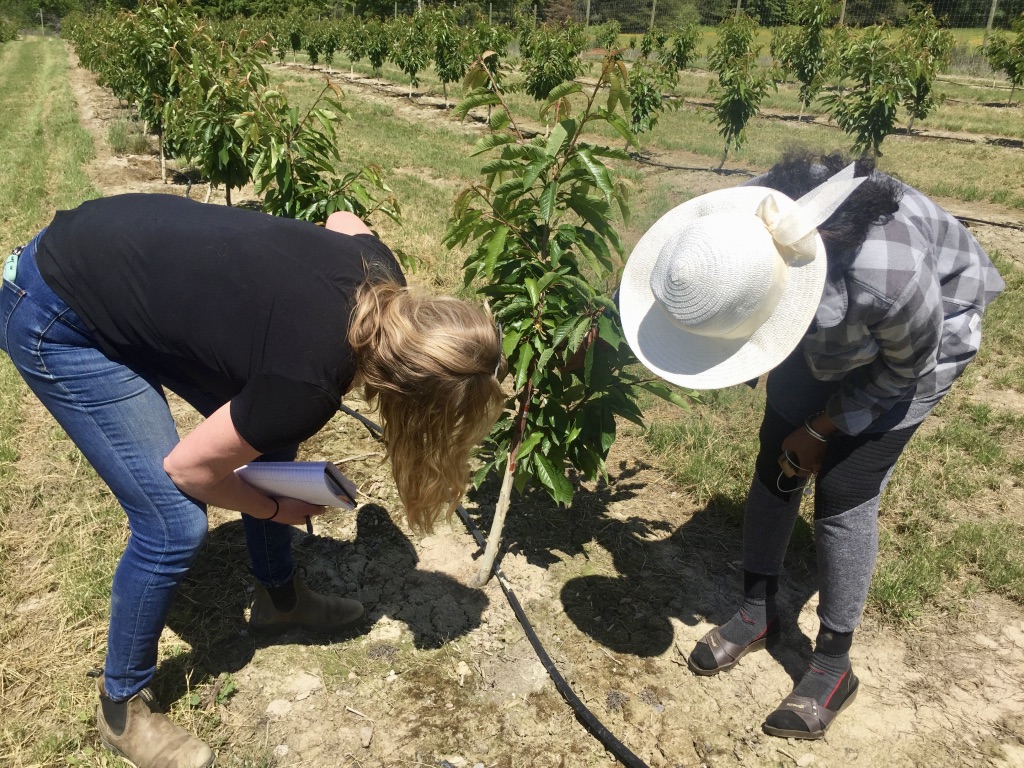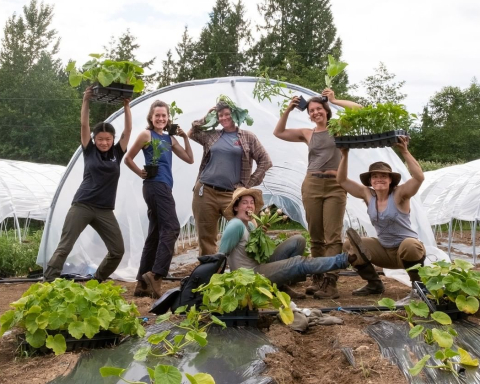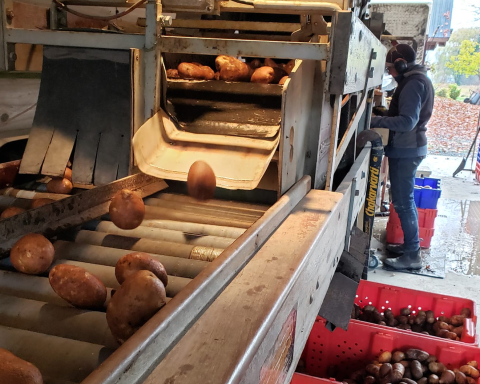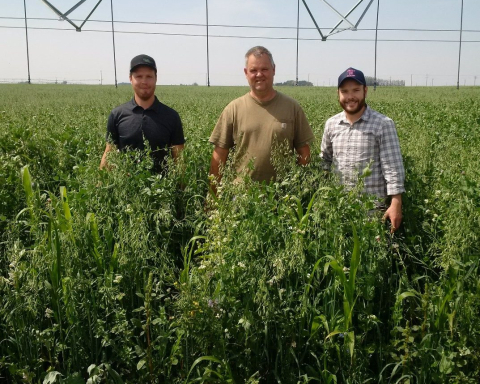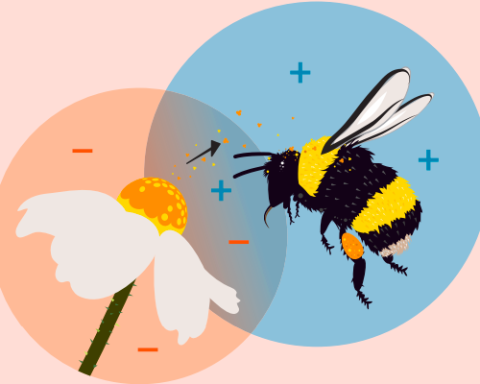The Untapped Potential for Agriculture
By Chris Bodnar
At the end of a recent visit to my colleague Lydia Ryall’s farm in Delta, we agreed that having the opportunity to visit each other’s farms and talk shop is an incredibly valuable practice. But in reality, it’s tricky to fit into a busy schedule. It was the first time I had made it back to Cropthorne Farm for a visit in a decade.
“I mean, it takes time to plan and organize. Being able to get together as larger groups is more efficient and offers more opportunities to network,” Lydia says. “Whose job is that? Really, that’s what extension would be for, but we don’t have that.”
The Big Gap in BC Agriculture
What Lydia referred to that day had me thinking about the missed opportunities we have in agriculture. Being able to share knowledge through on-farm field days, practical research participation, and collective problem solving is invaluable. But it’s all too rare that these opportunities come about.
Extension services in BC are rare, but not far from the minds of many in the sector. A decade ago, the organic sector had a provincially-funded extension agent for a short period. Certain sectors and regions have examples of excellent extension services.
Recent research by Kwantlen Polytechnic University’s Institute for Sustainable Food Systems shows a clear desire for extension services amongst organic growers in the province, but also a gap in understanding the potential services that could be provided. Only 52% of respondents to the survey had previously heard of agricultural extension, but 80% saw a clear benefit to the organic sector of having a province-wide, coordinated extension service.
The main areas of need growers identified were around soil health stewardship, pest management, and vegetable production. Those who see a benefit to extension identify three primary barriers that limit access: lack of available services, cost, and distance from services.
In a province as vast as BC with significant climactic differences and geographic barriers, now facing rapid climate change, the need for networking and sharing knowledge might be the key to developing resilience in the sector.
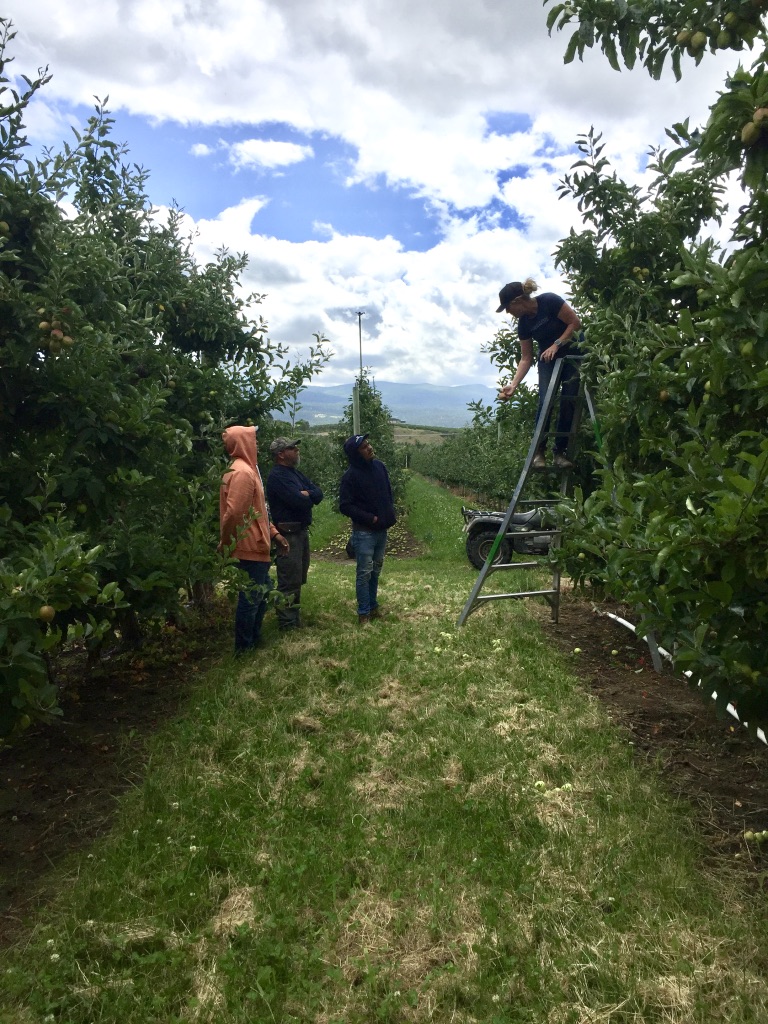
Boots on the Ground: It’s About Connection
When Molly Thurston talks about doing extension work, her enthusiasm is obvious. And after working for 13 years doing extension work with BC Tree Fruits Cooperative, Molly has enjoyed the hands-on experience of working with farmers.
“Extension is really boots on the ground, connection between what’s happening in the research community and what’s happening on the farm level,” she explains. “It often bridges the gap between the farm level and the industry itself.”
During her time with BC Tree Fruits Cooperative and now as a farmer and horticultural consultant, Molly appreciates the relationships extension services can build amongst farmers. The value of extension services is having local experts supporting growers with problem-solving and information-sharing.
“I’ve always been attracted to extension because it’s science, it’s communication, it’s understanding the needs of the growers and being able to communicate those needs up to researchers and industry to advocate for that work to be done,” says Molly. “And it’s then taking the information that comes out of the research and policy realms and breaking it into pieces that are manageable at the farm scale. I would call that technology transfer—growing techniques, growing practices, policy changes, economics that are applied by the farmer.”
What are Agricultural Extension Services?
Kwantlen’s 2020 report outlined how extension services could benefit the organic sector in BC. The report explains that the concept of extension originated in Europe in the 1850s. The term “extension” comes from the idea of extending or disseminating useful information from universities to the greater population.
In Canada, extension services were funded by the federal government and delivered by provincial governments until cutbacks in the 1980s reduced and eventually eliminated extension services. Extension programs continue in many parts of the US through over 100 land-grant colleges and universities.
The Kwantlen report describes extension as “strategic applied research, information transfer and communication, and knowledge/method/tool adoption programming,” where “sector and community development is the primary purpose.”
Extension can address any number of topics, ranging from soil fertility management through to economic factors to develop the sector. The focus of extension can include technical, social, environmental, economic, and other aspects of the food and agriculture sector.
Extension agents become a key link between growers and researchers. They develop strategies to share applied research and techniques with and amongst growers. They also provide feedback from growers to researchers and policy experts to help them understand the needs of the agricultural sector.
What this looks like in a practical setting is informal education methods, such as on-farm research and demonstration, field days, technical publications, workshops, conferences, seminars, and short courses. In many instances, extension agents help coordinate farmer-to-farmer information sharing.

The Kootenays and Current Extension Programming
Although extension services are no longer provided through the province, there is an example of extension happening right now that has demonstrated a number of benefits.
Rachael Roussin has been a program coordinator for the Kootenay & Boundary Farm Advisors (KBFA) for over five years. The KBFA delivers extension services to growers throughout the Kootenays.
“The extension priorities were established by our funders,” says Rachael. “The emphasis was one-on-one technical support for commercial producers in all sectors. Boots on the ground was a big priority and we took it from there.”
The program is supported financially by the Columbia Basin Trust along with three regional districts.
Rachael explains that the experimental nature of problem-solving and innovation can be supported by extension.
“There is so much need to demonstrate what works on the ground for folks to adopt new methods. Producers are very curious and they are always trying new things but there is very little margin for error as profits are slim. For example, we cannot expect a small-scale organic farmer to invest $500 into a new type of cover crop that might not yield the desired results,” Rachael says.
“Every farm that I know is a living lab with continuous experimentation. We could speed up adoption and help producers avoid mistakes if we could share success stories. It includes sharing producer’s experiences in their region for their market and growing conditions.”
In Rachael’s work she has witnessed the improved communication in the agricultural sector between farmers as well as with provincial agencies, experts, and researchers. “There is a greater sense about who is doing what, the challenges, opportunities, and what farmers are interested in working on and what supports they require.”
For Rachael, their program has been able to meet the needs of growers in the Kootenays and offer opportunities that wouldn’t have happened otherwise.
“We are bringing producers together and talking about the things that they are interested in through field days, workshops, and events. Networking is crucial in agriculture and farmers don’t usually have the time to self-organize. We have also been able to tailor extension services specifically to the topics and goals of our region’s farmers by talking with them and asking them what they want to hear about. Producers show up because they asked for it. It’s a collaborative approach to extension and support.”
The Need for Extension In BC
Andrew Adams of Hope Farm Organics near Prince George recognizes the need for extension services tailored to bioregions throughout BC. As a farmer and proponent of agriculture in the North, he has worked with other growers in the region to identify the opportunities for farming at higher latitudes.
“If we are to increase the agricultural production of BC and create a more resilient system, surely extension and research will be a bottleneck that will become necessary to open,” Andrew says. “With the lack of educational opportunities in university to train new farmers up here, there are no new farmers created here in this specific region with its specific needs.”
During his time in the North, Andrew has identified the need for on-the-ground regional expertise to support resilience in agriculture and the food system. This is the result of differences in everything from culture and geography to geology and climate.
“A gleysol in the Lower Mainland is not the same as a gleysol in the Omineca in its origin parent material. Its chemistry is different, which can affect methods of soil amending,” Andrew says. “Most labs and qualified individuals deal largely with soils of major agriculture centres and thus specific soil series.”
In the absence of provincial funding, whether extension services are developed going forward will be up to regional governments to decide whether they have the desire to support agricultural development. Alternatively, the organic sector could work with private donors, universities, and public agencies to gather resources to attempt extension services again.
Whether or not this happens, it’s clear that the province is losing out on developing the full potential of its agricultural sector without greater on-the-ground support.
Chris Bodnar co-owns and operates Close to Home Organics with his wife, Paige, at Glen Valley Organic Farm in Abbotsford.
Feature image: Molly Thurston inspects a cherry tree with a colleague Credit: Molly Thurston.


